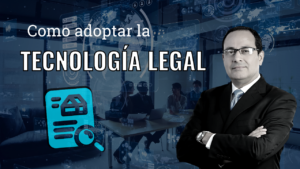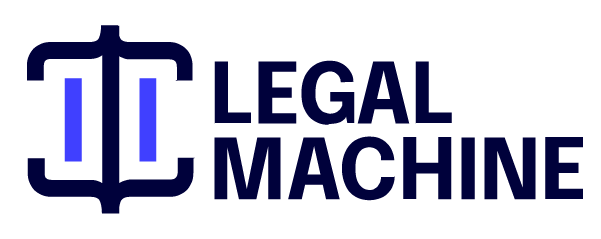Legal implications of the most disruptive technologies for a lawyer's work
Be aware that there is a delicate correlation between the need for digital transformation of our professional practice, the type of practice we have and the benefits of tools that we can integrate, it is essential to address technological legal evolution appropriately.

Technological integration into legal practice.
More than three years have passed since that episode and thanks to digital transformation and, especially, to technological and legal tools, that of legaltech, the management of dispatches has evolved rapidly.
In addition, Covid-19 imposes restrictions on us that urgently demand greater efficiency, supported by technologies consistent with the new reality, which will allow business continuity, remote access to our information, unrestricted communication with customers and management of matters in telematic form before official agencies.
Be aware that there is a delicate correlation between the need for digital transformation of our professional practice, the type of practice we have and the benefits of tools that we can integrate, it is essential to address technological legal evolution appropriately.
To illustrate the influence of the need for transformation, let's think that if our smart phone does not have a suite that allows us to process text files, electronic files, presentations and documents in portable format (.pdf), or calls audiovisuals, we would be without several skills that any client would expect us to have.
On the other hand, the relevance of the type of practice and the benefits associated with it we can appreciate better in the attraction of independent professionals has more economic tools, accessible from the cloud through all their devices and that respond to very frequent basic functions , although a certain size order would probably prefer a modular solution capable of centralizing the management of projects and expedients, invoicing, reports on the status of cases, intuitive information search, protection of personal data and information on legislative changes relevant, among other characteristics.
On the other hand, lawyers in legal departments must respond increasingly quickly to other instances of their organizations, as they are interested in improving the control of processes with minimal human interaction and also seeking options that allow them to automate many regulatory compliance processes, to reduce the risk of costly legal and reputational consequences.
Making legal practice more efficient
Dispatch management software can make us more efficient in areas such as administration, providing us with analytical information that allows agile decision making; finances, presenting us with the variables that affect liquidity and return; the market, analyzing customer data and the market as a function of dispatch strengths; professional performance, facilitating time control and meeting requirements in projects; and training, allowing us to identify themes in which our employees need to improve skills and develop competencies. Examples of management programs, among many others worthy of mention, could be Aranzadi Fusión y Kleos.
There are other tools that automate specific functions, reducing the time and expense dedicated to internal processes and promoting efficiency and productivity. Video conferencing applications are some of the most popular since Covid-19 lockdowns began, to such an extent that they become terms like Zoom, Teams and Meet in part of the vocabulary of daily use. Many of the things we did in person were taken to virtuality and, despite the detractors, not a few lawyers recognized that this helped to repair some grievances in access to justice and doubt that in the future virtual hearings will go to disappear. On the other hand, in the private sphere many also find benefits when they exercise remotely and they do not find themselves returning to their past habits.
The automation of contractual elaboration
Among the most important in the industry, because it substantially reduces the time and work required. Tools such as Legal Machine, for example, offer us models that prevent the legal requirements of many contracts, ensuring that we include the essential information of the parties, allowing us to choose between alternatives for different types of special clauses ; Prevents errors in automated form, allows the preview of contents and automatically generates frequently used accessory documents.
What should we have in mind?
When considering legaltech tools it is good to know what we need, when to acquire them, how to invert and how this inversion will return.
We must also check references to similar orders and information on available alternatives. Before closing the deal, it is necessary to confirm the degree of autonomy of the tool and that, if additions are needed, it will impact the cost. The territorial scope of the license must allow us to access authorized technical support. It is a fact that lawyers are not very advanced towards technology, so that nearby support, in our language, can make the difference.
Compatibility with the operating system and interoperability are important to ensure that information is exchanged with other tools in a useful way (hasn't the vocals disappeared from a document when sending it to a platform?). On the other hand, the accentuated decrease in dependence on a fixed physical space means that applications based on the network are becoming more and more appreciated, due to the fact that they allow access to fixed and mobile devices, without distinction.
Challenges
Technolegal integration requires a good attitude towards change and a dose of adaptation capacity. We must evaluate the benefits and performance of the tools, with a critical vision that allows us to recognize in a timely manner what has worked and what has not given results.
As I tell my students in the Master in Legaltech and Digital Management of the Law of the University of Salamanca, the low quality of data is also a challenge in the use of tools strong> legaltech. If our date is not properly structured, our experience will not be exemplary.
Regarding the economy, the arrival of disruptive technologies such as artificial intelligence, cognitive computing, automated learning and macrodata, as well as 5G networks, will open doors to a world of technological legal applications that could put a great pressure on small ones and average dispatches, faced with the risk of loss of competitiveness.
In the case of videoconferencing platforms, it is necessary to consider the risk of improper treatment of personal data; Furthermore, to prevent intrusions that threaten the privacy of communications. It is also necessary to guarantee the security of dispatch information that is accessed remotely and with the use of devices or networks that do not belong to the organization. Finally, user awareness is essential, as this will always be the most vulnerable element in the cybersecurity chain.

José Vega
Fintegrity Group
| jvega@fintegritygroup.com
I finished my career in the '80s, while working as an assistant in the litigation area of a Panamanian office. Before, in high school, I had been instructed in the use of Cobol and Fortran IV languages and learned to program in Basic, while the world only changed the cards punctured by floppy disks that our Wang 2200 laboratory equipment is capable of being 8” in size and with a capacity that does not exceed -miniscule- 80K.
This helped me to appreciate the changes in technology in an environment where the writing machine was omnipresent. One day I dared to suggest to my bosses that, for efficiency, the order should migrate to the computers, but they were satisfied with the work we had done and preferred to avoid problems.
Some time ago I established my own order, with computers, and four years later its size was comparable to that of my old bosses. So influential can be the use of technology in the exercise of law.
Be aware that there is a delicate correlation between the need for digital transformation of our professional practice, the type of practice we have and the benefits of tools that we can integrate, it is essential to address technological legal evolution appropriately.
